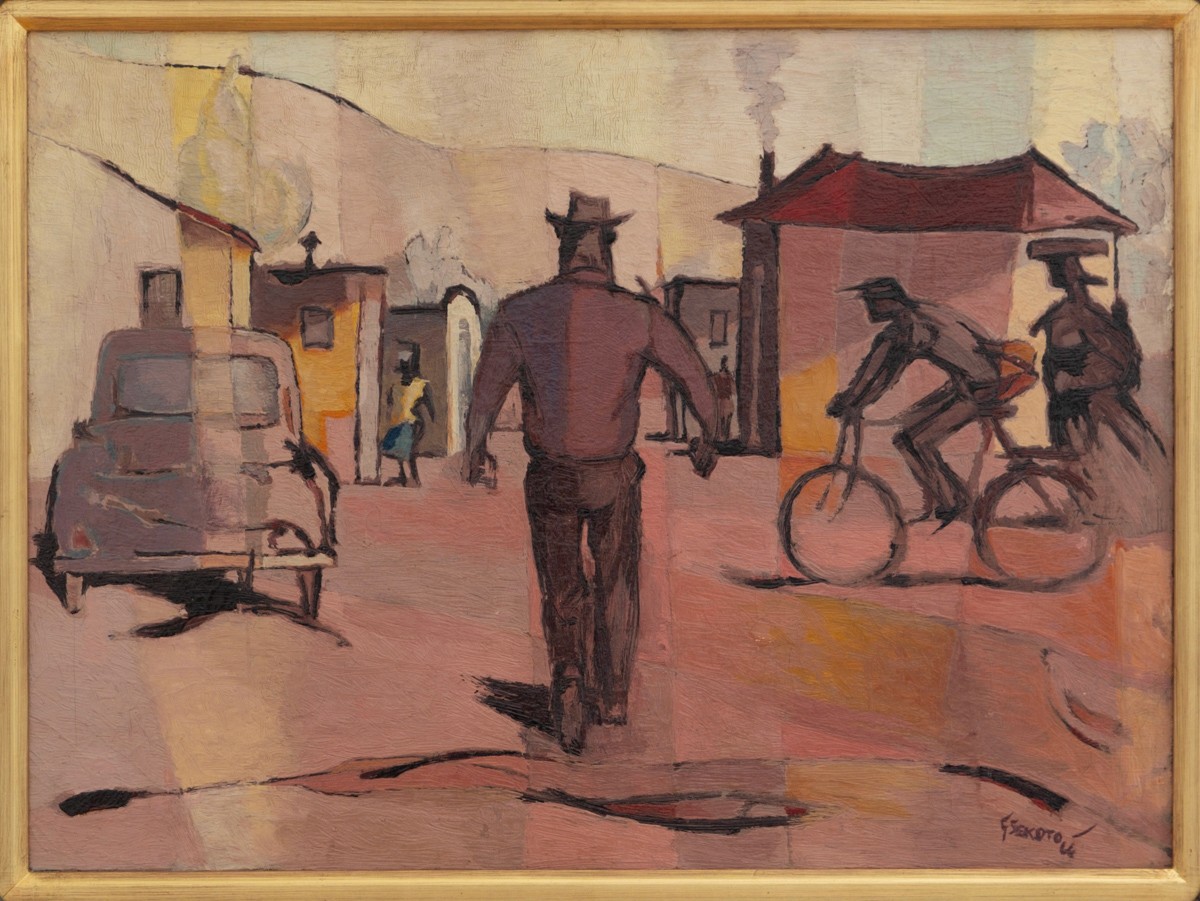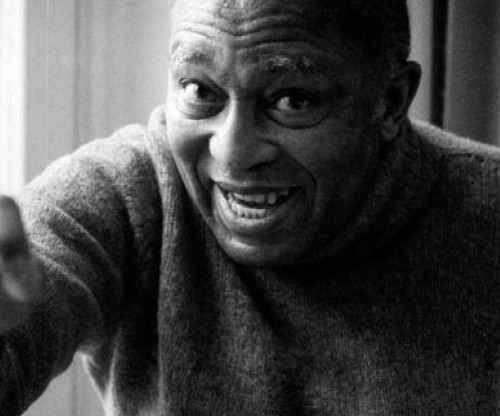Gerard Sekoto





On 20 March 1993, South African artist and musician Gerard Sekoto (80) died in Paris. Often cited as the pioneer of urban black art and social realism, Sekoto studied to be a teacher and his art career only began in earnest when he moved to Sophiatown, Johannesburg in 1939. Life in Sophiatown provided him with his subject matter, and he painted urban images of active scenes in the community in bold colours, in an expressionist style. He held his first solo exhibition in 1939 and in 1940; the Johannesburg Art Gallery purchased one of his pictures. This was to be the first picture painted by a black artist to enter a museum collection. In 1942, Sekoto moved to District Six, Cape Town and in 1945 moved again to Eastwood, Pretoria. In his paintings he used strong bright colours and unusual perspectives to convey the lively vitality and spontaneity of urban street life, despite the hardship of life in Sophiatown and District Six. His artwork is highly sought after by collectors, but a lesser known fact is that he could play several musical instruments. In 1947, just before the Afrikaner Nationalist party came to power, Gerard Sekoto left South Africa for Paris. He was employed as a pianist purely by chance at l'Echelle de Jacob (Jacob's ladder), a trendy nightclub/bar reopened for business after the war. Between 1956 and 1960, several of Sekoto's compositions were published by Les Editions Musicales, and Sekoto played piano and sang on several records. He composed 29 songs, mostly excessively poignant, recalling the loneliness of exile, yet displaying the inordinate courage of someone battling to survive in a foreign cultural environment.
On 20 March 1993, South African artist and musician Gerard Sekoto (80) died in Paris. Often cited as the pioneer of urban black art and social realism, Sekoto studied to be a teacher and his art career only began in earnest when he moved to Sophiatown, Johannesburg in 1939. Life in Sophiatown provided him with his subject matter, and he painted urban images of active scenes in the community in bold colours, in an expressionist style. He held his first solo exhibition in 1939 and in 1940; the Johannesburg Art Gallery purchased one of his pictures. This was to be the first picture painted by a black artist to enter a museum collection. In 1942, Sekoto moved to District Six, Cape Town and in 1945 moved again to Eastwood, Pretoria. In his paintings he used strong bright colours and unusual perspectives to convey the lively vitality and spontaneity of urban street life, despite the hardship of life in Sophiatown and District Six. His artwork is highly sought after by collectors, but a lesser known fact is that he could play several musical instruments. In 1947, just before the Afrikaner Nationalist party came to power, Gerard Sekoto left South Africa for Paris. He was employed as a pianist purely by chance at l'Echelle de Jacob (Jacob's ladder), a trendy nightclub/bar reopened for business after the war. Between 1956 and 1960, several of Sekoto's compositions were published by Les Editions Musicales, and Sekoto played piano and sang on several records. He composed 29 songs, mostly excessively poignant, recalling the loneliness of exile, yet displaying the inordinate courage of someone battling to survive in a foreign cultural environment.
On 20 March 1993, South African artist and musician Gerard Sekoto (80) died in Paris. Often cited as the pioneer of urban black art and social realism, Sekoto studied to be a teacher and his art career only began in earnest when he moved to Sophiatown, Johannesburg in 1939. Life in Sophiatown provided him with his subject matter, and he painted urban images of active scenes in the community in bold colours, in an expressionist style. He held his first solo exhibition in 1939 and in 1940; the Johannesburg Art Gallery purchased one of his pictures. This was to be the first picture painted by a black artist to enter a museum collection. In 1942, Sekoto moved to District Six, Cape Town and in 1945 moved again to Eastwood, Pretoria. In his paintings he used strong bright colours and unusual perspectives to convey the lively vitality and spontaneity of urban street life, despite the hardship of life in Sophiatown and District Six. His artwork is highly sought after by collectors, but a lesser known fact is that he could play several musical instruments. In 1947, just before the Afrikaner Nationalist party came to power, Gerard Sekoto left South Africa for Paris. He was employed as a pianist purely by chance at l'Echelle de Jacob (Jacob's ladder), a trendy nightclub/bar reopened for business after the war. Between 1956 and 1960, several of Sekoto's compositions were published by Les Editions Musicales, and Sekoto played piano and sang on several records. He composed 29 songs, mostly excessively poignant, recalling the loneliness of exile, yet displaying the inordinate courage of someone battling to survive in a foreign cultural environment.
On 20 March 1993, South African artist and musician Gerard Sekoto (80) died in Paris. Often cited as the pioneer of urban black art and social realism, Sekoto studied to be a teacher and his art career only began in earnest when he moved to Sophiatown, Johannesburg in 1939. Life in Sophiatown provided him with his subject matter, and he painted urban images of active scenes in the community in bold colours, in an expressionist style. He held his first solo exhibition in 1939 and in 1940; the Johannesburg Art Gallery purchased one of his pictures. This was to be the first picture painted by a black artist to enter a museum collection. In 1942, Sekoto moved to District Six, Cape Town and in 1945 moved again to Eastwood, Pretoria. In his paintings he used strong bright colours and unusual perspectives to convey the lively vitality and spontaneity of urban street life, despite the hardship of life in Sophiatown and District Six. His artwork is highly sought after by collectors, but a lesser known fact is that he could play several musical instruments. In 1947, just before the Afrikaner Nationalist party came to power, Gerard Sekoto left South Africa for Paris. He was employed as a pianist purely by chance at l'Echelle de Jacob (Jacob's ladder), a trendy nightclub/bar reopened for business after the war. Between 1956 and 1960, several of Sekoto's compositions were published by Les Editions Musicales, and Sekoto played piano and sang on several records. He composed 29 songs, mostly excessively poignant, recalling the loneliness of exile, yet displaying the inordinate courage of someone battling to survive in a foreign cultural environment.
selected artworks
view all
view all
view all
view all
VIEW ALL ARTISTS
